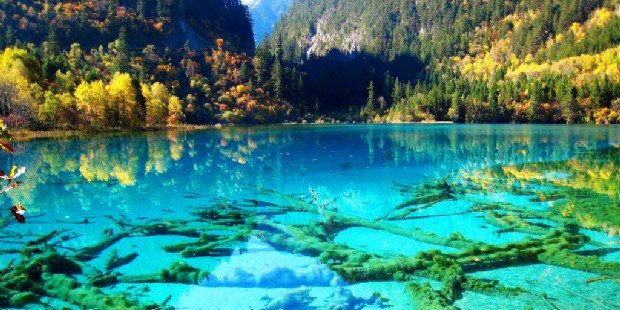Hills of Kangding
Once
arrival in the small town, travelers are usually more allured by the stunning
scenery in the vicinity consisting of snowy mountains, sweeping grasslands,
glaciers and monasteries, as well as its unique Khampa charm hailing from mixed
cultures. The place was regarded by some westerners as where Tibet really
begins. Autumn is the wonderful season for traveling in Kangding. When the sun
is setting, the atmosphere becomes intoxicating, the profound silence broken
only by the rippling sound of the lake water and the chirping of birds.


Located
360km west of Chengdu, Kangding is the county seat of Ganzi Tibetan Autonomous
Prefecture. This small mountain city is at an altitude of 2600m (8,530 ft) and
offers a welcome relief from the pollution and overcrowding of the larger
cities of the Sichuan plain. The town is cradled in a steep valley with a
collection of modern concrete buildings and dark-roofed houses randomly
scattered along the torrential Zheduo River.

For centuries, the town has been the trade center of the Han and Tibetan cultures. The central streets bustle with trading activity. It's also the traffic hub of west Sichuan and the gateway to Tibet. Also, it has been the meeting place of many cultures and therefore is home to memorial to the Tea Horse Road. It serves as kind of last outpost before the wild Tibetan mountains and passes of the Chengdu-Lhasa highway and the historical Tibetan region of Khamba.

For centuries, the town has been the trade center of the Han and Tibetan cultures. The central streets bustle with trading activity. It's also the traffic hub of west Sichuan and the gateway to Tibet. Also, it has been the meeting place of many cultures and therefore is home to memorial to the Tea Horse Road. It serves as kind of last outpost before the wild Tibetan mountains and passes of the Chengdu-Lhasa highway and the historical Tibetan region of Khamba.
Though
the town is relatively small, there are still lots of scenery spots for curious
visitors. The prior place for people who are attracted by the descriptions in
the love song of Kangding is Mount Paoma.
On the upper slopes just behind the town, the birthplace of the Kangding Love Song, hosting a couple of Buddhist temples and a horse-racing court, offering a panorama view of the town, the valley and the surrounding mountains. Minya Konka (Mt. Gongga / Gongga Shan) is visible if you are lucky. In Anjue Temple, a quietly busy collection of courtyards and Tibetan shrines over on the west bank, whose monks are tolerant of tourists
wandering around.

On the upper slopes just behind the town, the birthplace of the Kangding Love Song, hosting a couple of Buddhist temples and a horse-racing court, offering a panorama view of the town, the valley and the surrounding mountains. Minya Konka (Mt. Gongga / Gongga Shan) is visible if you are lucky. In Anjue Temple, a quietly busy collection of courtyards and Tibetan shrines over on the west bank, whose monks are tolerant of tourists
wandering around.

While
in Nanwu Temple, the most active lamasery in the area, you can get good views
of the valley as it is set in the west of town on the northern bank of the
river. Lake Mogecuo is one of the highest alpine lakes of northwestern Sichuan
at an elevation of 3700m, featuring a combination of snow-capped mountains,
lakes, hot springs, virgin forests, and rare species.
Outdoor
activity opportunities abound with particular focus on hiking and growing
influx of bikers in cool autumn. There is also an authentic "hot
springs" nearby and a cable car in the city that takes you up the
mountainside. Enjoy your journey in the romantic Kangding!



































0 评论: